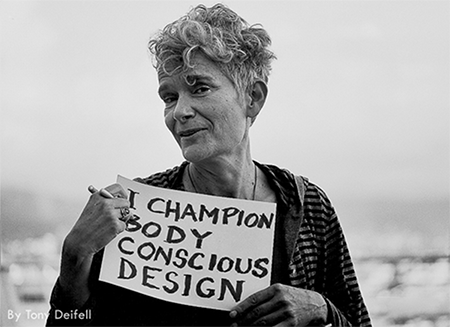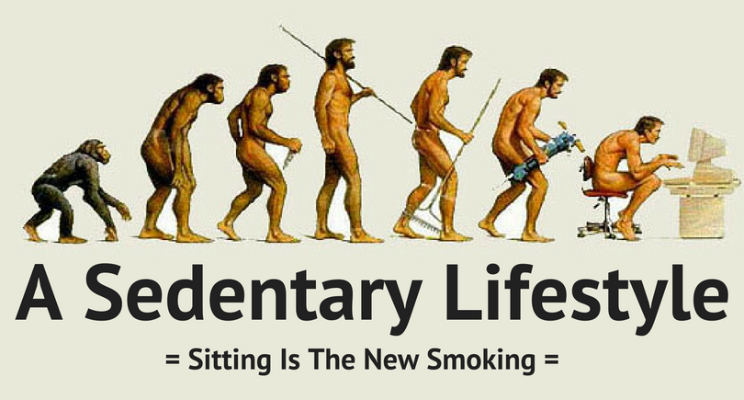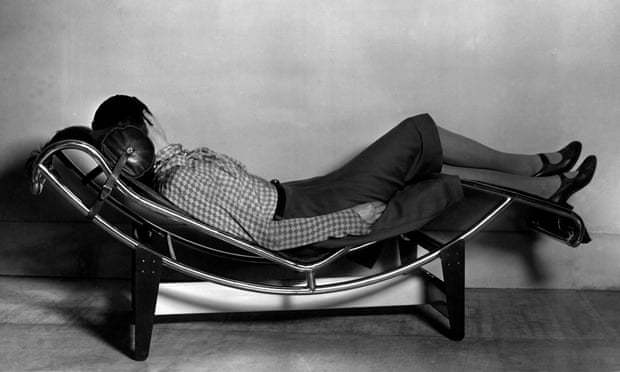
The interview and her key-points are so vivid and strong that it makes me wonder why is it that the topic is still relatively unknown and has not become the mainstream of thinking. Her flagship book "The Chair" is over 20 years old now, yet is becoming relevant as never before. She makes a stunning review of how our western civilisation got obsessed with chairs and where it brings us to. Cranz successfully debunks widespread myths about ergonomics and does not spare criticism for the so-called designer- and ergonomic chairs everyone craves, yet fails to understand their detrimental effects to our health. The book is an absolute must-read for everyone interested in body conscious design and health and comfort at a workplace.
Cranz introduces the idea of a "Perch" - a mix of sitting and standing being a better working position than plain sitting or straight standing and argues that a reclined position - like e.g. the one in a lounge chaise is one of the most comfortable and healthy ones of them all. No wonder her lounge chair models got stolen during a functional art exhibition:

In one of the chapters, describing how an ideal workplace should look like she goes ahead with the following idea: "When you want to do some word processing, you can recline in a lounge chair with the keyboard on your lap and the screen mounted at an angle...". We were stunned to see such a precise description of our LEVUS ZERO-G Workstation, made independently 20 years prior to its invention.
The idea of Perching - a hybrid sit–stand posture being a good compromise between sitting and standing has been analysed in more detail in a joint effort of US-Canadian research team


The LEVUS Team, inspired by the timeless masterpiece - the LC4 model of a classical lounge chair by Charlotte Perriand and Pierre Le Corbusier designed back in 1928, is bringing the comfort of a lounge chaise to the realm of our everyday computer work. If there were computers in 1928 I'm sure Le Curbusier and Perriand would have developed monitor holders and a mouse table for ergonomic computer work.

Whoever is your expert / furniture supplier - make sure they're addressing all aspects of the "chair-table-equipment-body" complex . Most chair designers were and still are overly obsessed with the looks, forms or particular type of material used in their product lines, like the mesh-fabrics everybody is suddenly jumping onto. A chair is subconsciously remaining a status object for many, so people often trade health aspects for abstract status symbols, which are often violating the basic rules of ergonomics. We believe that one cannot improve the ergonomics of a workplace by simply replacing one chair by another. The problem needs to be addressed holistically - all of the components of the complex need to be reevaluated:
Chair: reclined position, solid planar sitting surfaces, shoulder & head support
Table: with a changed chair, the table needs to be resized and repositioned too. We believe a narrow functional mouse desk that can accommodate a cup of coffee, notepad and your smartphone is sufficient. Nobody's having those plastic in- and outbox trays anymore. Nobody should be physically printing corporate presentations and quarterly-reports either. Why would one need a Two-Squaremeter desk then?
Equipment: most computers can handle multiple screen support, so go ahead and use the possibility. External screens increase your productivity by 30%, as recent research findings suggest. The screens should be placed at an angle, so that your neck is not getting a forward tilt.
Body: listen to your body. Develop mindfulness about how you use it. Make regular breaks and take time off from your work. You can not operate at 100% of your capacity from 9 to 5.
You have to have those 4 ingredients right, if you want a definite and positive change in comfort and productivity. Our philosophy at LEVUS is to have them all integrated into one workspace environment.
Want more ergonomic lifehacks?
